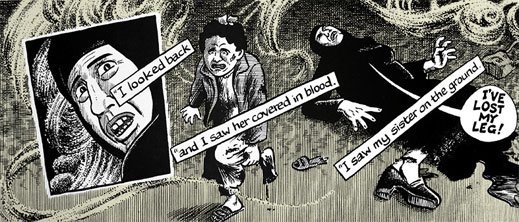Although the conflict between Israel and Palestine has been one of decades, the English-speaking media in particular has not done the work of presenting the atrocities committed against Palestinians over the years accurately or at length. Sacco uses the phrase "footnotes" with this very notion in mind. He went on an investigative trip to Gaza to gather memories of those who had lived through the horrors that has not been properly communicated to Western audiences, and he purposefully interviews mostly Palestinian people -- as opposed to both Palestinians and Israelis. One could view this approach as biased, but the intention is to seek out voices that have otherwise not been heard. Through the interactions that Sacco writes of, it is clear that emotions and tensions run high amongst people living in the Gaza strip: many of them live beneath the line of poverty, many suffer exploitative working conditions, etc. The narrative of actual Palestinian experience can lend the Westerner insight on why these people have "hatred planted in their hearts" towards Isreal.
Being an outsider to Palestine, Sacco comes into Gaza with an idea for a story, and may conduct his interviews and investigation in a way that serves his story the best. It is interesting to flip through the pages and note that the narrator is always drawn wearing opaque glasses: this could be a symbol for his position as an observer. A lot of the illustrations of individual Palestinian people are full of emotion, which is read by facial expression. Eyes often play a huge role in that expression, and Sacco does not draw himself with such readability. See images below to notice the difference:

No comments:
Post a Comment